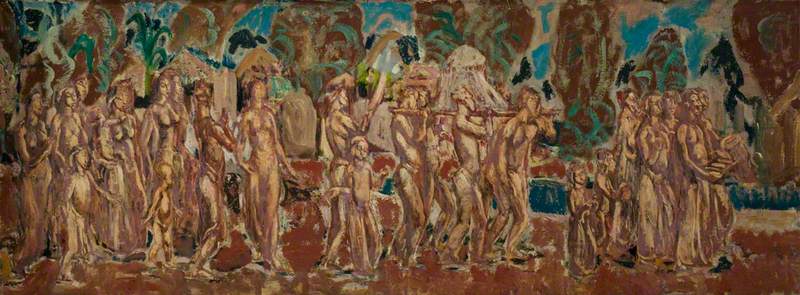Scottish-born Australian painter. After serving in the British army in the First World War, he studied intermittently at the *Slade School, 1919–24, then travelled the world. In 1934 he visited Melbourne, where he obtained a commission to paint a mural for the Menzies Hotel. Because it was compared unfavourably with the work of *Brangwyn, he destroyed it and boarded a ship bound for the Philippines the following morning. From 1940 to 1943 he served as a captain in the British army in India. On being invalided out he lived in Melbourne and then near Cairns before moving to Darwin. In April 1952 he attempted to sail from Darwin to Dili in Timor on a raft made of softwood and petrol drums. He was presumed lost at sea and an obituary appeared in The Melbourne Herald on 13 May 1952, but thirteen days later he landed on a Timor beach.
Read more
The Indonesian authorities refused him permission to stay and eventually deported him to Singapore, where he was placed in a home for the destitute. He was eventually returned to England as a result of the intervention of British government authorities, but after some disagreeable experiences, such as digging ditches in the winter to repay his fare, he returned to Sydney in 1953. He constructed a hut for himself on Bribie Island, off the Queensland Coast near Brisbane, and lived and worked there until his death. Fairweather painted mainly in earth colours used by the artists of South-East Asia and the Pacific and he was one of the first artists to assimilate aboriginal art into his own work. He also had a great admiration for Chinese art and civilization, which was expressed in his fluent, calligraphic style. He began as a painter of figure subjects, but his work ‘moved gradually towards an abstraction that allowed him to transcend personal anxieties and construct a cosmological or religious vision in which, most perfectly in Monastery (1961, NG, Canberra), the movement of becoming and the stillness of being could be held in a tenuous equilibrium’ (Christopher Allen, Art in Australia, 1997).
Text source: A Dictionary of Modern and Contemporary Art (Oxford University Press)









